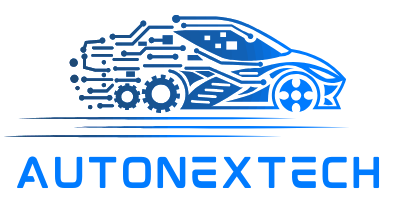The Evolution of Vehicle Connectivity: From Basic Bluetooth to AI-powered Systems
October 25, 2023 | by autonextech.com

Introduction: As technology advances at a rapid pace, our vehicles have become more than just a means of transportation. They’re now powerful, connected devices, bridging the gap between our physical and digital worlds. In the past couple of decades, the progress in vehicle connectivity has been nothing short of remarkable. From the humble beginnings of Bluetooth connections to the sophisticated AI-driven systems of today, the journey has been transformative.
1. The Early Days: Bluetooth Connectivity Back in the Day…
The early 2000s saw cars embracing Bluetooth technology. It was a revolutionary feature, allowing drivers and passengers to connect their mobile devices to their cars. This meant hands-free calls, streaming music, and access to contacts, all without the need for any physical connection.
The Impact: This seemingly simple addition improved driver safety, reducing the need for physical phone handling. It also introduced the concept of in-car entertainment that went beyond the radio.
2. The Rise of In-Car Infotainment Systems
The Next Step: As touchscreens became more prevalent, infotainment systems started to appear in vehicles. These systems integrated everything – from navigation and music to climate control and even apps. Brands like Apple and Android introduced CarPlay and Android Auto, further bridging the gap between smartphones and cars.
The Impact: With infotainment systems, vehicles became extensions of our digital lives. Navigation became more intuitive, entertainment options expanded, and drivers gained more control, all through a central interface.
3. The Age of Connected Cars and Telematics
The Digital Revolution: Post the infotainment era, vehicles began to be equipped with internet connectivity. This brought about telematics systems that could gather, store, and send data, enabling features like real-time traffic updates, remote vehicle diagnostics, and emergency services.
The Impact: With connectivity came a plethora of features that enhanced safety, security, and convenience. Vehicles could now communicate with each other and with infrastructures, leading to smarter and safer roadways.
4. Enter AI: The Modern Era of Vehicle Connectivity
The Game Changer: With advancements in artificial intelligence (AI) and machine learning, vehicles are now smarter than ever. Modern cars come equipped with AI-driven voice assistants, predictive maintenance alerts, and even autonomous driving capabilities. Connectivity is no longer just about entertainment; it’s about enhancing the entire driving experience.
The Impact: AI has transformed vehicle connectivity from a passive system to an active assistant. Vehicles can now learn from driver behavior, anticipate needs, and offer proactive solutions. Safety features have also been enhanced, with AI-driven systems capable of detecting potential hazards and even taking preventive measures.
Conclusion
The evolution of vehicle connectivity is a testament to how technology can redefine industries. From the basic Bluetooth connections of the past to the AI-powered marvels of today, we’re on the brink of a future where our cars might just know us better than we know ourselves. As AI and connectivity continue to evolve, one can only imagine what the next chapter in this journey will bring.
RELATED POSTS
View all


